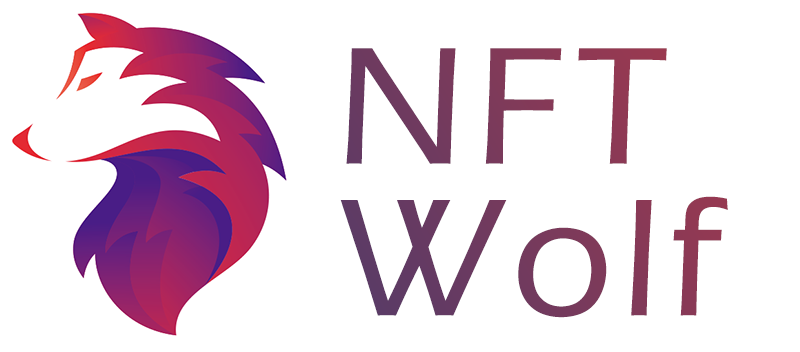For more than a decade, Bitcoin and cryptocurrency have proved to be highly disruptive. Recently, cryptocurrency has been doing the bulk of that disruption in the art industry through the concept of non-fungible tokens.
Mostly abbreviated as NFT, non-fungible tokens are a new method for creative artists to transform their pieces into digital artwork.
As the word fungible implies, NFTs are digital assets you can’t replicate. Plus, thanks to the functionality of crypto, you can sell them at any price to buyers across the globe.
NFTs sold as digital artworks in 2020 had a combined value of $12.9 million in the United States. These numbers show how popular NFTs are becoming.
Consequently, there is a corresponding popularity in the emergence of amazing NFT marketplaces like OpenSea, Mintable. While both OpenSea and Mintable are great platforms to mint and trade NFTs, they have their differences.
In this article, we’ll compare and contrast OpenSea vs. Mintable in an unbiased style. Keep reading to decide which of these NFT platforms to use.
What Is OpenSea?
In simple terms, OpenSea is an NFT marketplace that offers smooth, seamless NFT transactions. While NFTs are just getting mainstream popularity, they have been in existence for some time.

The first NFT marketplace offering the easy trading of non-fungible tokens was OpenSea — via its website (opensea.io). Not only is it the first, but OpenSea also prides itself as the largest NFT marketplace for digital collectibles.
OpenSea first launched in 2017 and has experienced exponential growth and expansion since then. Before the NFT platform clocked one year, they had already received seed funding worth $120,000.
After its first funding, OpenSea has received multiple investments. A notable one came in March 202, where they received $23 million as Series A investment.
Trade Volume and Users
Getting these investments only indicates that OpenSea founders Alex Atallah and Devon Finzer are doing many things right. Therefore, it is no surprise that DappRadar ranked OpenSea as the largest NFT marketplace in cumulative sales.
OpenSea has completed a whopping $835 million in NFT sales and has over 160,000 active traders. That makes them the NFT marketplace with the fourth-highest number of traders.
OpenSea’s website can seem confusing and overwhelming at the start, but with time, you’ll get used to using it. To buy or sell digital items on OpenSea, you don’t need to know the person on the other side of the deal.
Your transaction depends on Ethereum blockchain technology. It doesn’t matter if you’re dealing with a dishonest person; as long as you’re using OpenSea, the chances of getting scammed are slim.
A smart contract procedure enables NFT trading on OpenSea. You can’t send an NFT creator money without getting the digital assets that you paid for. It’s either a complete deal or no deal at all on OpenSea.
OpenSea ensures exclusive deals through a process known as Wyvern Protocol. As long as both parties agree, when one part of the deal is met, the other part completes automatically.
What Is Mintable?
Mintable is an outstanding NFT marketplace, reliant on the Ethereum blockchain for its operations. Apart from buying and selling, Mintable allows you to create and distribute your NFT on its marketplace.

Mintable is a smart contract enabled by Ethereum. Therefore, it’s far easier to create and transact NFTs without having plenty of technical knowledge or experience.
For instance, if you have a creative picture on your computer, you can easily convert them into an NFT on Mintable. With this NFT platform, you can turn various content, including music, PDFs, images, artwork, and files, into digital items existing on the blockchain.
All you’ll need to do is complete the item’s details and rely on the ETH smart contract to complete the rest of the job. You don’t have to worry about doing any coding or programming.
Mintable has been in existence since 2018, and its founder is Zach Burks. Mintable’s recent surge in popularity has come thanks to some promotion from billionaire Mark Cuban. While he isn’t the owner of Mintable, his influence has been vital to Mintable’s growth.
Another reason for Mintable’s popularity is its gasless transacting feature launched in the early part of 2021. Normally, before minting an NFT on any platform, you’ll have to pay gas fees because of the security of blockchain technology. Gas fees affect the price artists and collectors have to pay to mint NFTs.
On Mintable, you can avoid these gas fees while minting your NFT, saving you up to $150, depending on the situation. Mintable creates an invisible blockchain transaction while a creator is building a brand new digital art. The transaction is right there, but the creator can’t see it until a trade occurs.
The gasless feature is also partly responsible for Mintable’s recent surge in popularity. With it, Mintable gives room to digital artists who don’t have enough capital to enter the NFT market with their collectibles. When a buyer is on hand to buy the digital art, that’s when both parties get to see and pay the gas fees.
OpenSea vs Mintable: Audience
Both Mintable and OpenSea have many NFT enthusiasts, buyers, and sellers using the platforms. But, when it comes to trades, OpenSea has seen tremendous growth. Information from Ledger Insights shows OpenSea has close to 162,000 traders on the NFT platform.
According to a report from DAppsRadar, OpenSea has made more than $1.5 billion in trade volumes in only thirty days. Between July and August 2021, OpenSea increased its users by a whopping 181%. From their transaction history, more than 140,000 new wallets transact with OpenSea.
For founder Devon Finzer, OpenSea caters to a global audience. The goal is to become the Amazon of non-fungible tokens. As such, the NFT marketplace is home to digital artists, celebrities, and collectors looking to flip digital items.
Mintable, on the other hand, has about 650,000 people on its platform, according to CNBC. Most of these users are creators minting their artworks into digital collectibles. Mintable’s core audience comprises everyday people who are waking up to the possibilities of NFTs.
Mintable is a smart contract that allows this group of people to create NFTs without programming skills. Mintable appeals to first-timers looking to test the waters and leverage Ethereum smart contracts for worldwide digital sales. They’re looking to send a variety of digital items in different formats, including JPEGs, MP4s, PNGs, and PDFs.
OpenSea vs. Mintable: Supported Currencies
Since both OpenSea and Mintable are NFT marketplaces, cryptocurrency is the legal tender of value. For OpenSea, the primary currencies for transactions include Ethereum (ETH) or wrapped Ethereum (WETH), USDC, and DAI.
For Mintable, you need to pay with Ethereum regardless of your mode of payment. Mintable relies on the ETH blockchain to run its transactions, so you need ETH to perform a buying transaction. You have the liberty to pay with your credit card on Mintable, but it’ll convert it to Ethereum before making the payment.
OpenSea vs. Mintable: Supported Wallets
A blockchain-enabled wallet is your connection between NFT platforms and your crypto value. For both OpenSea and Mintable, you’ll need to use a wallet supporting NFT transactions.
Some of the wallets compatible for trades on OpenSea include;
- Trust wallet
- Metamask
- Bitski
- Dapper
- Coinbase
- Torus
- Walletlink
- Walletconnect
- Operators
- Kaikas
- Arkane
- Authereum
- Formatic
- Portis
Mintable, on the other hand, advises that you use Metamask “for your best experience.” Sure, you can use other wallet options like Trust Wallet and Rainbow wallet on the Mintable platform. But we’ll strongly advise you follow the disclaimer from the Mintable team.
OpenSea vs Mintable: Other Differences
Although both OpenSea and Mintable are smart contracts enabled by the Ethereum blockchain to make NFT transactions, they have some differences. The differences between OpenSea and Mintable that are worthy of note include the following.
Extra Charges
Compared to Mintable, OpenSea is more aggressive in the way that it generates revenue. For instance, OpenSea takes a quaint 2.5% of the purchase price of all NFTs traded using its platform. On the other hand, Mintable allows newbie artists to mint and sell NFTs without direct investments and initial gas fees.
Status Pills
OpenSea provides a bird’s eye view of your activity on its marketplace through a status pill located on the sidebar. The status pills include on sale, offers, presale, auctions, and bundles.
For someone using OpenSea for the first time, using the status pill can be a tad confusing. But, we find that it gets easier with a few days of practice.
OpenSea vs Mintable: Conclusion
This article has provided you with thorough information on OpenSea and Mintable. If you’re thinking of creating, purchasing, or selling your NFT, you can choose between these two options. Both OpenSea and Mintable have great features while offering transparent and safe NFT transactions.
In our opinion, there’s no best choice between OpenSea and mintable. Both are great platforms for NFT transactions. However, if you’re new to the world of NFTs, you may want to try out Mintable. If you have experience creating and pricing digital art, you can try out OpenSea to get the best deals.

